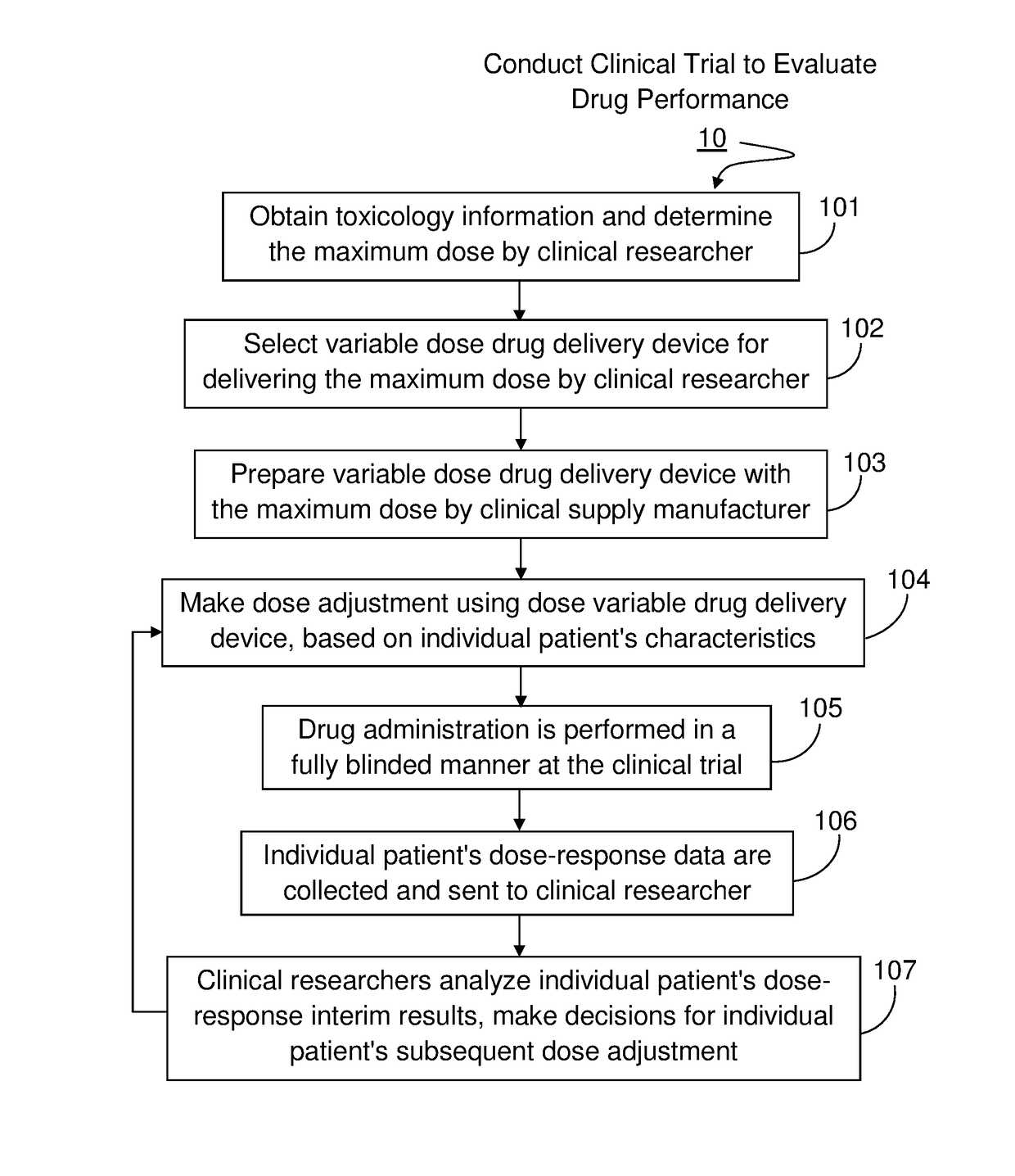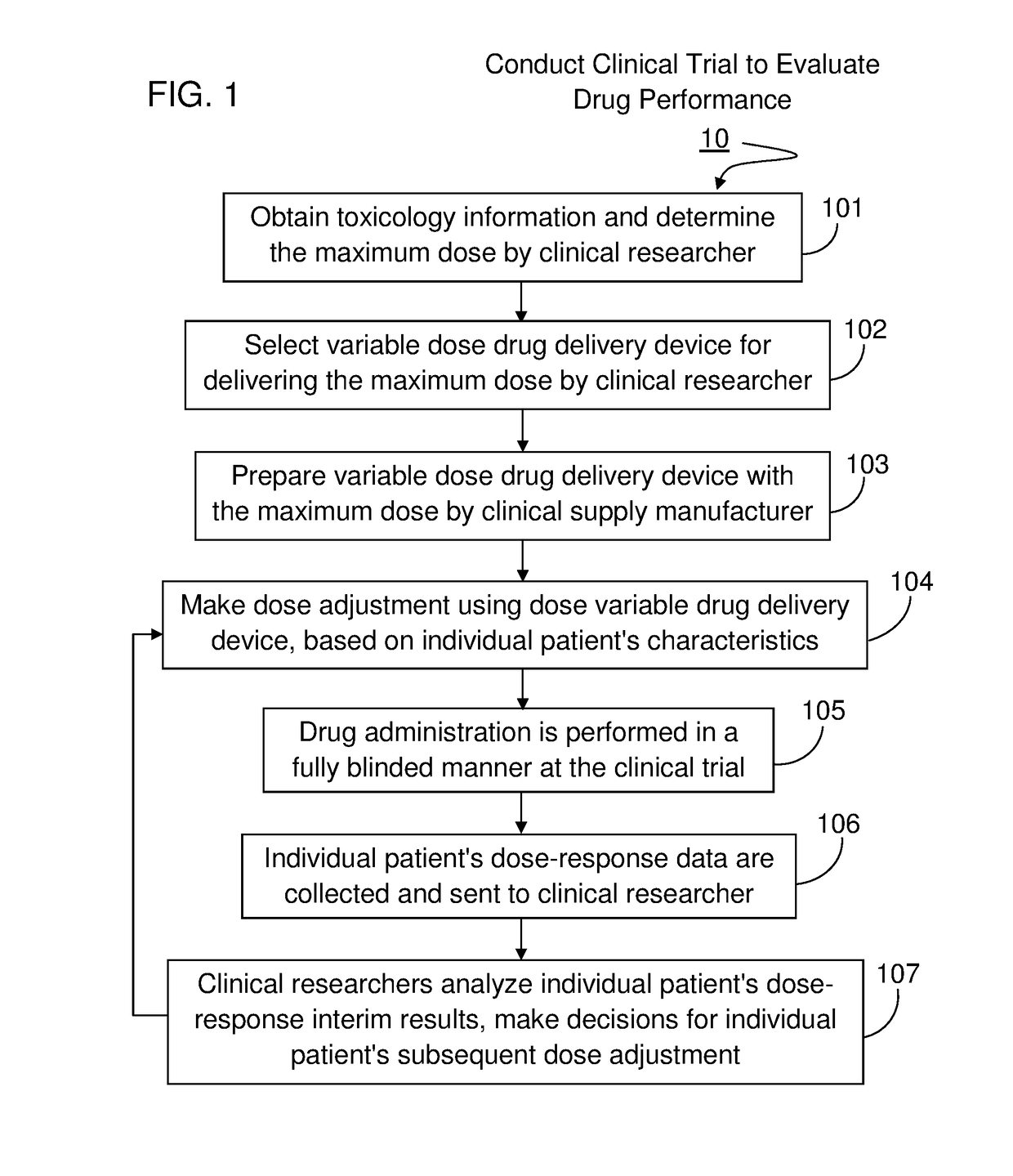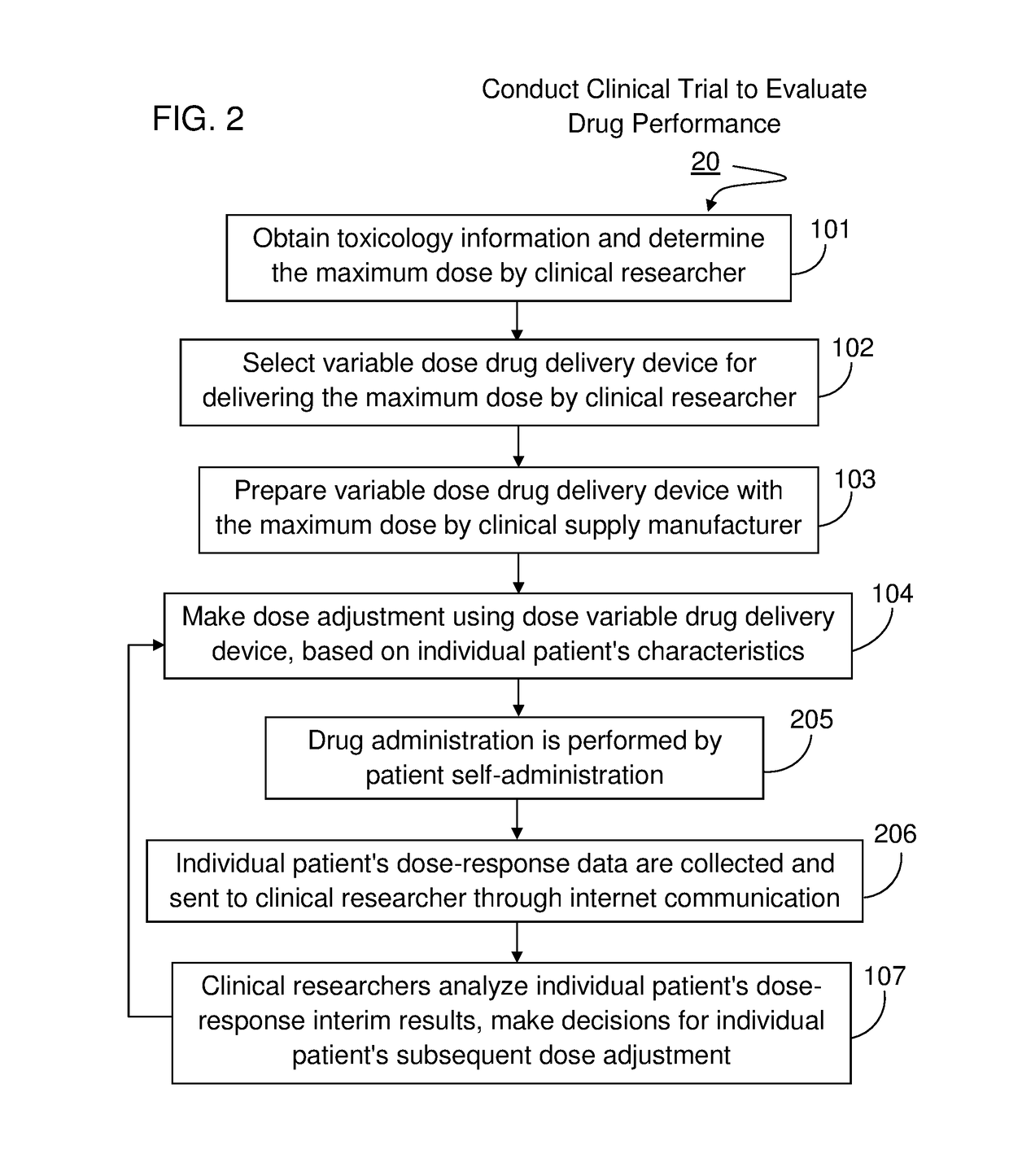Method For Conducting Adaptive Clinical Trial With Drug Delivery Device
a drug delivery and clinical trial technology, applied in the field of adaptive clinical trials with drug delivery devices, can solve the problems of difficult to conduct this type of flexible clinical trials, significant material waste, and the study blinding for different dosages may become more complex, and achieve the effect of improving patient adherence, cost-effective and efficien
- Summary
- Abstract
- Description
- Claims
- Application Information
AI Technical Summary
Benefits of technology
Problems solved by technology
Method used
Image
Examples
Embodiment Construction
[0023]The present invention will become more fully understood from the detailed description given hereinbelow and the accompanying drawings which are given by way of illustration only, and thus, are not limitive of the present invention, and wherein:
[0024]The methods and apparatus presented herein can be used for conducting clinical trial to develop any of a variety suitable therapeutic agents or substances, such as a drug, into a patient. Initially it may be convenient to define that, the term “adaptive clinical trial” is meant to a clinical trial that allows modifications to the trial and / or statistical procedures of the trial after its initiation without undermining its validity and integrity; the term “variable dose drug delivery device” is meant to a drug delivery device capable of delivering at least two different doses; the term “fixed dose drug delivery device” is meant to a drug delivery device capable of delivering only one dose. The term “autoinjector” is meant to a devic...
PUM
 Login to View More
Login to View More Abstract
Description
Claims
Application Information
 Login to View More
Login to View More - R&D
- Intellectual Property
- Life Sciences
- Materials
- Tech Scout
- Unparalleled Data Quality
- Higher Quality Content
- 60% Fewer Hallucinations
Browse by: Latest US Patents, China's latest patents, Technical Efficacy Thesaurus, Application Domain, Technology Topic, Popular Technical Reports.
© 2025 PatSnap. All rights reserved.Legal|Privacy policy|Modern Slavery Act Transparency Statement|Sitemap|About US| Contact US: help@patsnap.com



